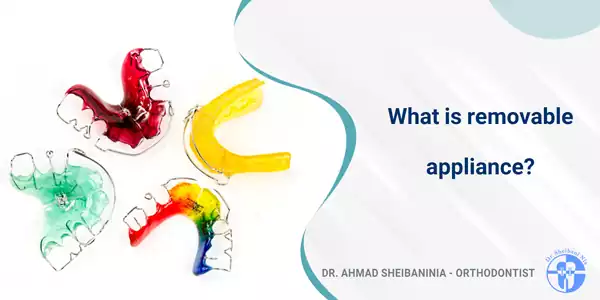How removable appliances work?
Removable appliances work by simple tipping movements of the crowns of the teeth about a fulcrum close to the middle of the tooth. They also allow differential eruption of teeth, for example by using bite planes. They differ from fixed appliances, which are capable of complex movements of multiple teeth, including bodily movement, root torque and rotation.
Advantages of removable appliances
- They are removable and therefore easier to clean
- They can provide increased vertical and horizontal anchorage due to palatal coverage
- They can produce efficient over-bite reduction in a growing child
- They can transmit forces to blocks of teeth
Disadvantages of removable appliances
- The appliances can be left out
- Only tilting movements are possible
- They affect speech
- A technician’s input is required to make the appliances
- Intermaxillary traction is more difficult
- They are inefficient for multiple tooth movements
- Lower removable appliances are more difficult to tolerate
Lower removable appliances
Generally these are more difficult to tolerate due to encroachment on the tongue space. Retention of the appliance can also be a problem as the lingual inclination of the molars makes clasping difficult. Consequently, lower removable appliances are generally not recommended and the rest of this article will refer to upper removable appliances only.
Initial popularity of removable appliances
At the beginning of the twentieth century, orthodontics in the UK was provided using removable appliances that consisted of a vulcanite baseplate that covered the palate and capped the molars and premolars for retention. Although the materials changed, removable appliances remained the principal appliance for orthodontic treatment in the UK and Europe for the next 70 years. In contrast, the removable appliance had little impact on American orthodontics, which at that time was dominated by Edward Angle. Angle was originally a prosthodontist with an interest in occlusion. Producing an ideal occlusion relied on the ability to exactly position teeth and this required the use of fixed appliances. It was Angle that established orthodontics as a specialty and ran the only postgraduate orthodontic courses in the world at that time. Consequently, Angle’s trainees dominated teaching departments in the US for the next 40 years – hence the almost exclusive use of fixed appliances in American orthodontics.
Thanks for reading this content of Dr. Sheibani Nia’s website, The best orthodontist in Tehran.


بدون نظر